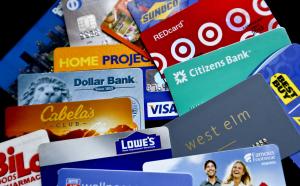Coronavirus stimulus checks: Here's how people are spending their relief money
Many of the 175 million Americans who qualified for a coronavirus stimulus check spent the money almost as soon as the funds deposited and the majority of the cash injection went to paying bills, according to a new survey.
In April, most of the money went to credit card bills, loans and mortgages, and then groceries, a survey of over 5,000 people from SaverLife, a nonprofit that helps families save money and protect their futures, found. In May, a similar trend emerged.
“People are using money to survive,” Leigh Phillips, president and chief executive officer at SaverLife, told Cashay. “People are not misusing the money. People are using this for the absolute essentials and being smart about the future.”

Those who qualified received up to $1,200 with more allotted to married couples and those with child dependents. But unlike in 2008 when Americans also received stimulus money, people aren’t using their cash windfall to splurge.
“What we're seeing is people spending those funds on food and rent, and catching up on bills,” Phillips said. “Discretionary spending is way down.”
For the 37% of American households who couldn't cover a $400 emergency expense, the pandemic certainly constitutes an emergency. The most significant rise in spending has been on food, which is up 21% from March, the survey found.

The spike in grocery spending is attributed to the rise in food prices and likely because more members of the household are eating at home. For instance, low-income families with school-aged children who once relied on the school system for free or reduced meals on schooldays may no longer have that supplemental source of food.
The data also points to people cutting financial corners where they can like electing not to spend on medical issues (14% decrease) or making smaller credit card (53% decrease) and mortgage payments (30% decrease), so budgets can be freed up to spend on bare essentials.
How quickly Americans are spending their stimulus money also demonstrates just how needed the funds were by recipients.
Stimulus payments were spent rapidly with about one-third of people reporting their money was gone within four days. Over half of the respondents spent their stimulus payments within two weeks.
Phillips encouraged those who continue to experience financial hardship to “really try and advocate for yourself in accessing as many resources as you can.” That could mean signing up for food assistance or applying for unemployment insurance.
The prospect of a second round of stimulus checks is still being debated in Congress. Phillips said that stimulus checks are “extremely necessary” in helping people and “probably will be necessary for it to continue.”
Stephanie is a reporter for Yahoo Money and Cashay, a new personal finance website. Follow her on Twitter @SJAsymkos.
Read more information and tips in our Spending section






